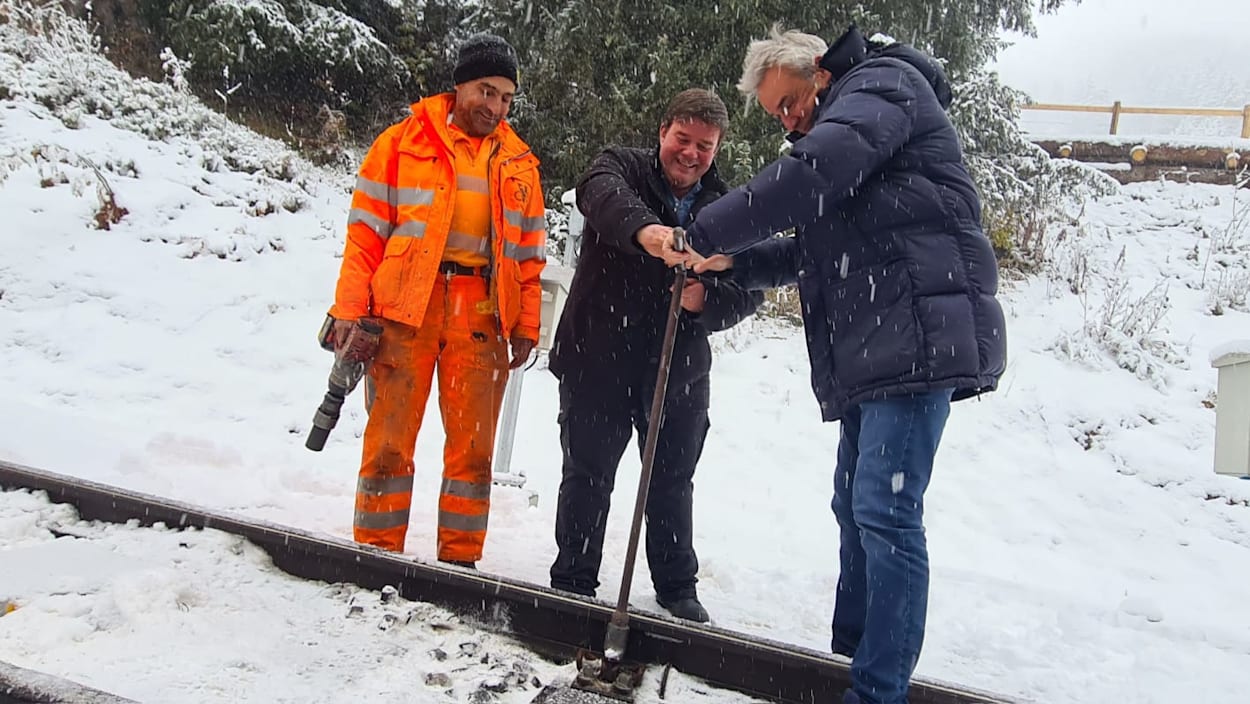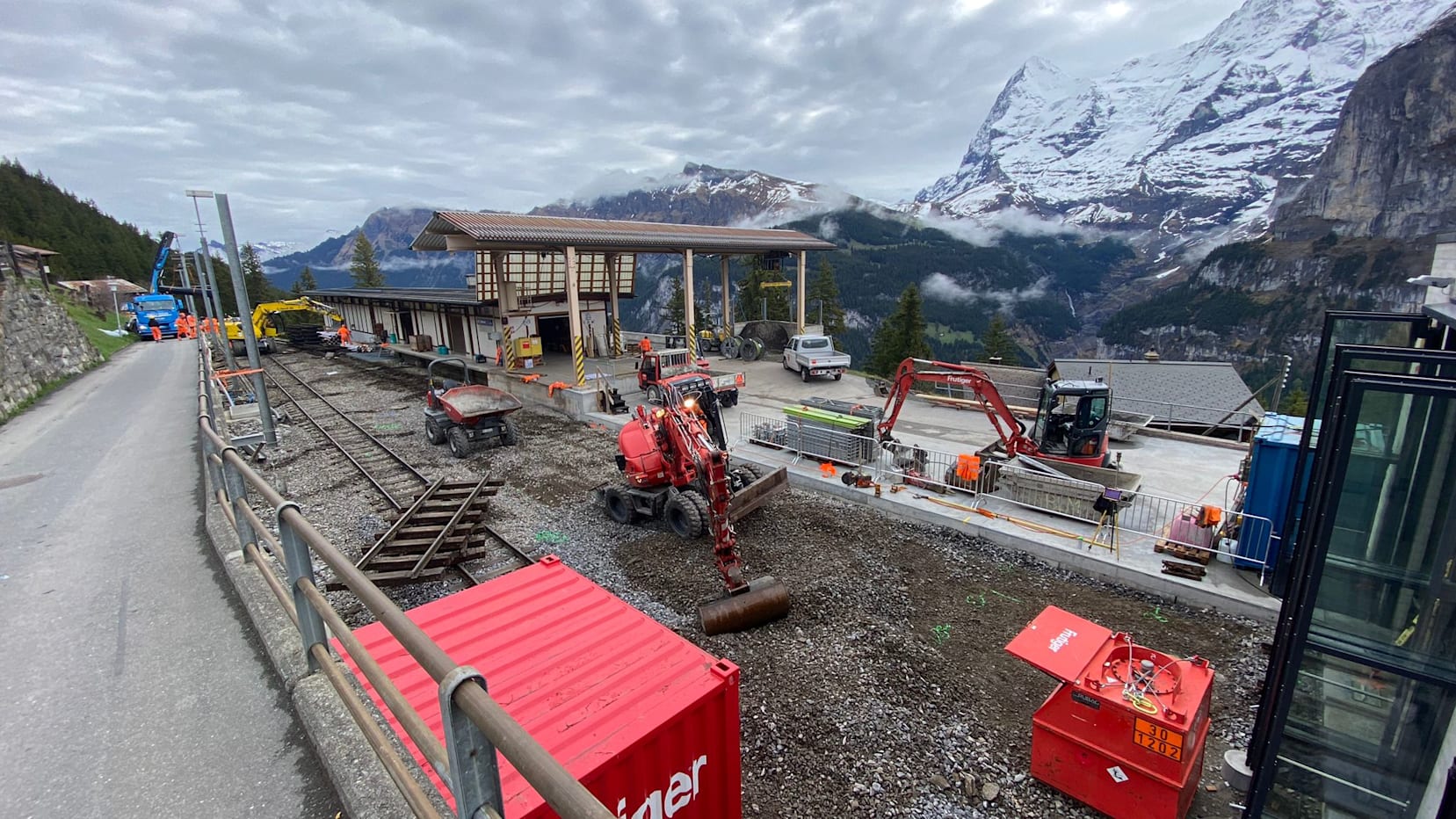
10.11.2023
Lauterbrunnen-Mürren mountain railway: The final sleeper has been laid
After around six years of major and minor construction phases, work on the renovation of the Grütschalp-Mürren adhesion railway, part of the Lauterbrunnen-Mürren mountain railway (BLM), is coming to an end: On Friday, 10 November 2023, the last sleeper was laid at Winteregg during a media event. “The renovation of the Grütschalp-Mürren adhesion railway – including the Grütschalp, Winteregg and Mürren stations – is very important as a feeder for the car-free village of Mürren for the long-term improvement in the attractiveness of the location”, explained Urs Kessler, Director of Jungfrau Railways, on the occasion of the laying of the final sleeper. “These were intensive construction phases over a long period of time, so I’m happy that we were able to complete the work on the infrastructure around the adhesion railway on schedule without any incidents”, said Stefan Wittwer, Head of BLM.
WC facilities, lifts and subway
But first things first in the project costing CHF 63 million: much of the renovation work was necessary within the framework of the Swiss Disability Discrimination Act – for example, the toilet facilities on Grütschalp and Winteregg are now barrier-free, Mürren railway station (to be renovated in 2022), has a lift and access to the new rolling stock will be at ground level. Since this summer, guests have been able to enjoy views of the Eiger, Mönch and Jungfrau from the new terrace of the Grütschalp Bistro on the roof of Grütschalp station. The Winteregg crossing has also been renovated, the Grütschalp workshop modernised and the Winteregg station given a new building with a passenger subway and lift.
However, the centrepiece of the work is the complete renovation of the BLM line between Grütschalp and Mürren. Several thousand tonnes of ballast, around 8,000 new oak sleepers and around 9,600 metres of track in total were laid in several stages; for example, during the intensive construction phase in autumn 2021, when the second section from Grütschalp to Winteregg station was relocated.
The approach tracks at Grütschalp station and around 550 metres of track were already tackled in spring 2021. Most of these were located in a water protection zone. In future, rainwater must not be allowed to seep away in these areas, but channelled to the side into a collecting pipe via a barrier layer under the superstructure and away from the area in question. Two new points were also installed at Grütschalp railway station during this construction phase.
Rolling stock to arrive in spring
The new rolling stock will not arrive in time for the completion of the construction work. As already communicated, several of Stadler Rail’s suppliers are struggling with supply bottlenecks as a consequence of the war in Ukraine and the pandemic. Two of the three new multiple-unit trains will not arrive until May 2024, with a service start planned for June 2024. For BLM head Stefan Wittwer and his team, this now means that the existing vehicles require additional maintenance in order to remain in operation for longer.
Nevertheless, the first new vehicle was delivered last week, so that completion, commissioning and acceptance can take place over 80 days this winter. The findings will then be incorporated into the completion of the other vehicles at the factory, which will shorten the commissioning time on site.
The new multiple-unit trains fulfil the requirements of the Swiss Disability Discrimination Act: They increase travel comfort, and the passenger compartment as well as driver’s cab are air-conditioned. Two vehicles will be able to run every quarter of an hour. The journey time can be shortened by increasing the maximum speed from 30 to 50 km/h. The old railcars built in 1967 will be taken out of operation. It remains to be seen where they will find a new home.

